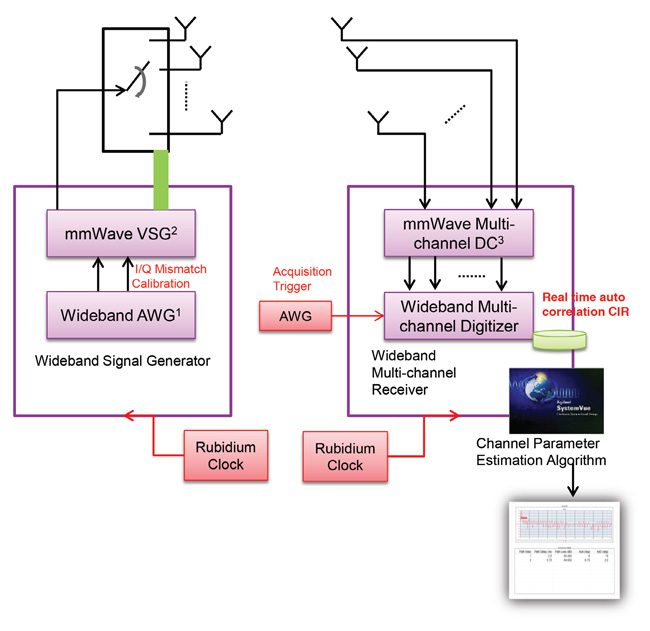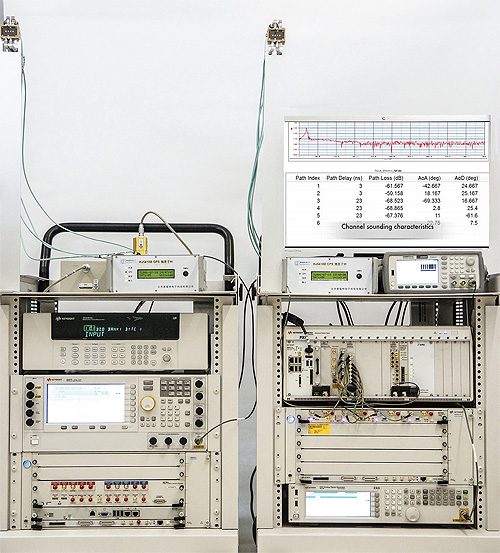The fifth-generation, or 5G, wireless networks now on the drawing boards could eventually impact mobile phones and connections classified under the Internet of Things (IoT). But the technical work underway to prepare for these networks is already affecting development work in microwave frequencies.
The aims of 5G networks include data rates of several tens of megabytes per second supported for tens of thousands of users and 1 Gbit/sec rates available simultaneously to workers grouped together. And 5G is expected to handle several hundreds of thousands of simultaneous connections as might be necessary for massive IoT sensor deployments. These improvements are expected to be rolled out by 2020.
There’s a lot to be done before any of these ideas can be realized. One problem is that the millimeter wave frequencies targeted for 5G use aren’t well characterized in terms of their signal propagation properties. Complicating the situation is that radio links in that range will use multiple-input and multiple-output (MIMO) techniques involving a multiplicity of transmit and receive antennas deployed to make use of multipath propagation modes. MIMO setups send and receive numerous data signals on the same frequency channel simultaneously. To boost data rates, signals get encoded in a way that exploits the independent fading and reflections of signals traveling past obstacles between the transmitter and receiver.

Critical to this sort of encoding is having a model of signal propagation in the planned RF channels. One important parameter in the model is the time dispersion arising because of reflectors and scatterers that lie in the propagation path between transmitters and receivers. The systems measuring the propagation delays frequently employ what’s called a spread-spectrum sliding correlator. The idea is to record snapshots of received power versus time.
Among other things, these snapshots show the number of signal peaks arriving at the receiver. The peaks correspond to copies of the transmitted signal traveling through multiple paths in the RF channel. On these snapshots, a plot of the time axis shows absolute propagation delay, where the axis origin corresponds to zero propagation delay between the transmitter and receiver.
Of course, the first and strongest received signal is that corresponding to line-of-sight (LOS). It is then easy to figure out multipath distances using the knowledge that RF energy travels at roughly 1 ft/ns in air. The peaks following the LOS signal are delayed copies caused by the additional distance traveled through multiple propagation paths. These delayed peaks can cause interference and affect the reliability of wireless systems.
Researchers describe the delay exhibited by an RF channel in terms of the delay times rather than the shape of the multipath signals received because the shape of delayed signals doesn’t much impact wireless system performance. The resulting characterization helps determine, for example, if all frequency components transmitted through the channel experience the same degree of fading.
The instrumentation setups for making these sorts of measurements can get complicated. To simplify things somewhat, instrumentation vendors now offer what are called reference solutions for running channel sounding tests, basically preconfigured combinations of the necessary test instruments.
A recent addition in this category is the 5G channel sounding Reference Solution recently developed by Keysight Technologies. The setup is designed for researching millimeter-wave 5G channel models and includes ultra-broadband and MIMO. The Keysight setup combines metrology grade hardware with software. Keysight said researchers can use the reference solution to get accurate absolute delay measurements with system-wide calibrations, precise timing and synchronization.

The Keysight system uses wideband correlation, rather than the more typical sliding correlator technique, to do channel sounding. The wideband correlation is faster, thanks to the use of a high-speed digitizer (M9703A) employing FPGAs. It also provides phase information about the channel, whereas sliding correlation methods only yield amplitude information. The reference solution includes Keysight’s SystemVue design and simulation software platform that makes channel parameter estimations and performs link-level simulations and validation of new 5G designs with the imported channel models.
Keysight Technologies channel sounding Reference Solution
www.keysight.com/find/5g

Leave a Reply
You must be logged in to post a comment.